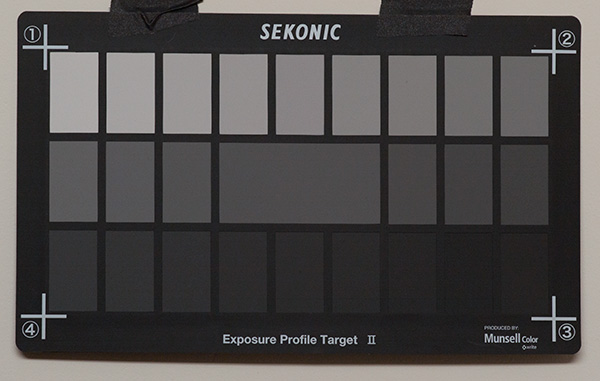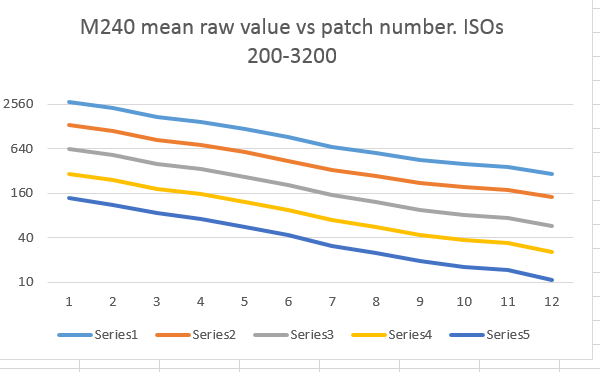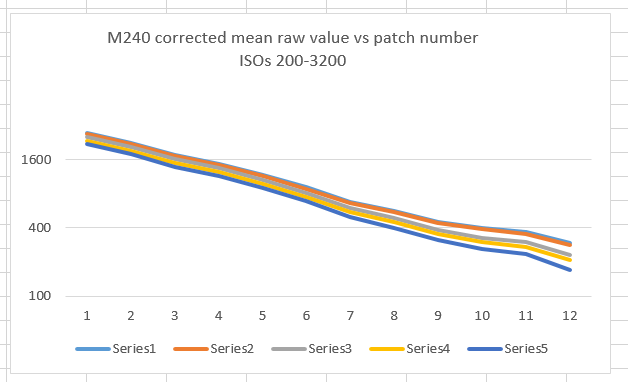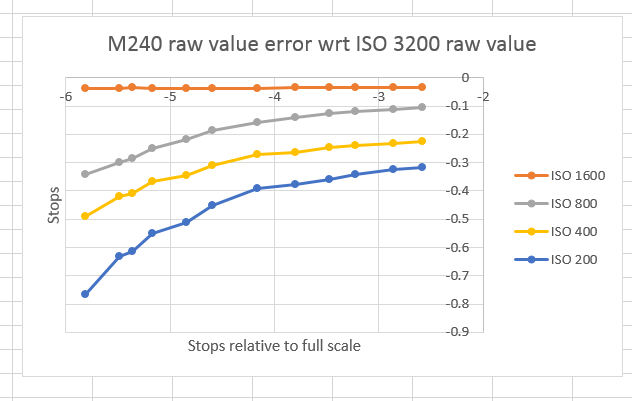I’m still trying to get a handle on the green shadows on pushed M240 images. I constructed a new experiment. I photographed this target:
with the brightest patch about 3 stops down from full scale at ISO 3200. That gave me an exposure of f/11 at 1/60. I used a 135mm APO Telyt f/3.4 to minimize falloff, and f/11 for the same reason. I made five exposures at same f-stop and shutter speed at ISO 200, 400, 800, 1600, and 3200.
I brought the images into RawDigger, and made a selection matrix that included about 90% of every other patch starting with the brightest one. I wrote the data out and created an Excel spreadsheet. I first plotted the mean raw values in the green channel versus the patch for all five ISOs:
Series 1 is ISO 3200, and Series 5 is ISO 200. You can’t tell too much from the above graph, so I created one in which the ISO 1600 raw values are multiplied by 2, the ISO 800 raw values are multiplied by 4, the ISO 400 raw values are multiplied by 8, and the ISO 1600 raw values are multiplied by 16. If everything is perfect, this would result in five lines overlayed on top of each other. It doesn’t:
In order to make the results more quantitative, I created a graph in which the horizontal axis is the mean corrected patch value measured in stops from full scale, and the vertical axis is the ratio of the corrected patch value for each ISO to that of ISO 3200. I also went to the trouble of getting the series names right. Here’s that graph:
I didn’t include ISO 3200, since it is by definition, always 0. The red and blue channels behave similarly.
Here are my conclusions in looking at the above graph.
- The M240 exhibits nonlinear response at ISOs 200, 400, and 800, artificially depressing darker tones. The darker the tone, the greater the depression. In my previous noise floor tests, I saw the noise floor to be artificially depressed at these ISOs.
- Adjusting the ISO setting from ISO 200 to ISO 3200 on the M240 gives more gain at each step than is correct. You can tell this by looking at the right side of the graph.
- This is probably the cause of the green shadows, since in most lighting conditions, for most subject matter, the green channel is the strongest. Depressing all the channels nonlinearly leaves the green channel the last one standing, so to speak.
- Because of the above, the green channel shadow shift is probably more accurately characterized as a shadow shift in the direction of the highest-valued raw channel. I will construct a test to verify this.




Leave a Reply